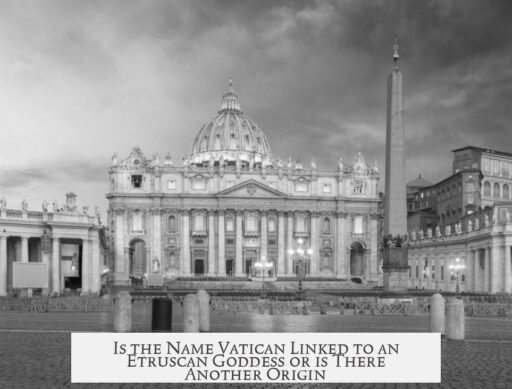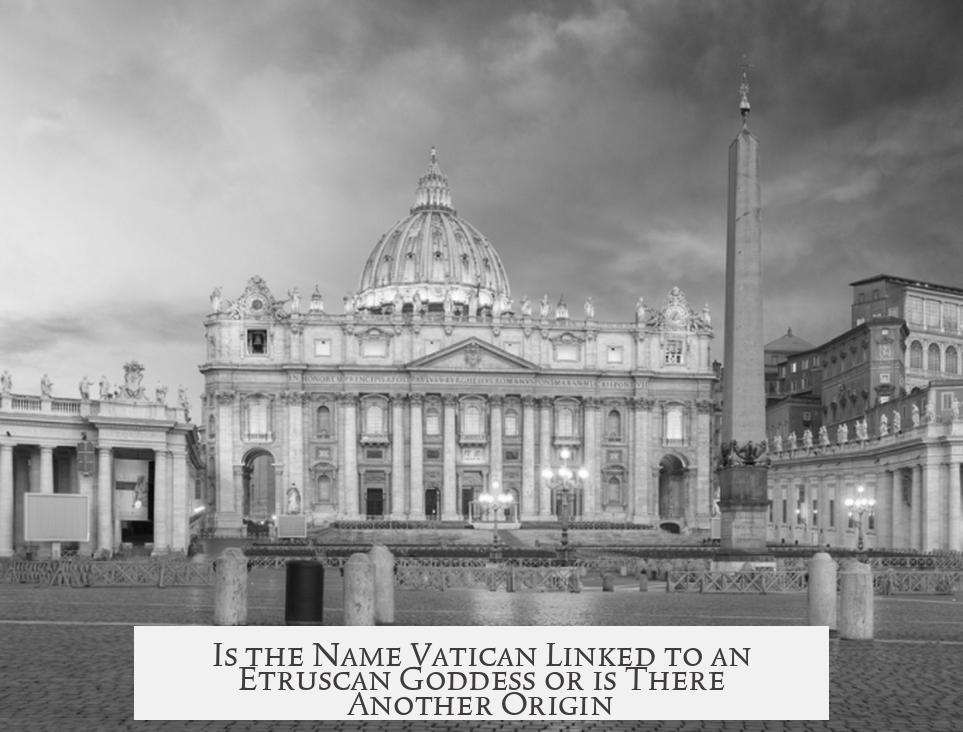The Vatican is not named after an Etruscan goddess named Vatika. Instead, its name derives from the Vatican Hill, known in Latin as Vaticanus Mons. This hill lends its name to the modern Vatican City, but the exact origin of the hill’s name remains uncertain.
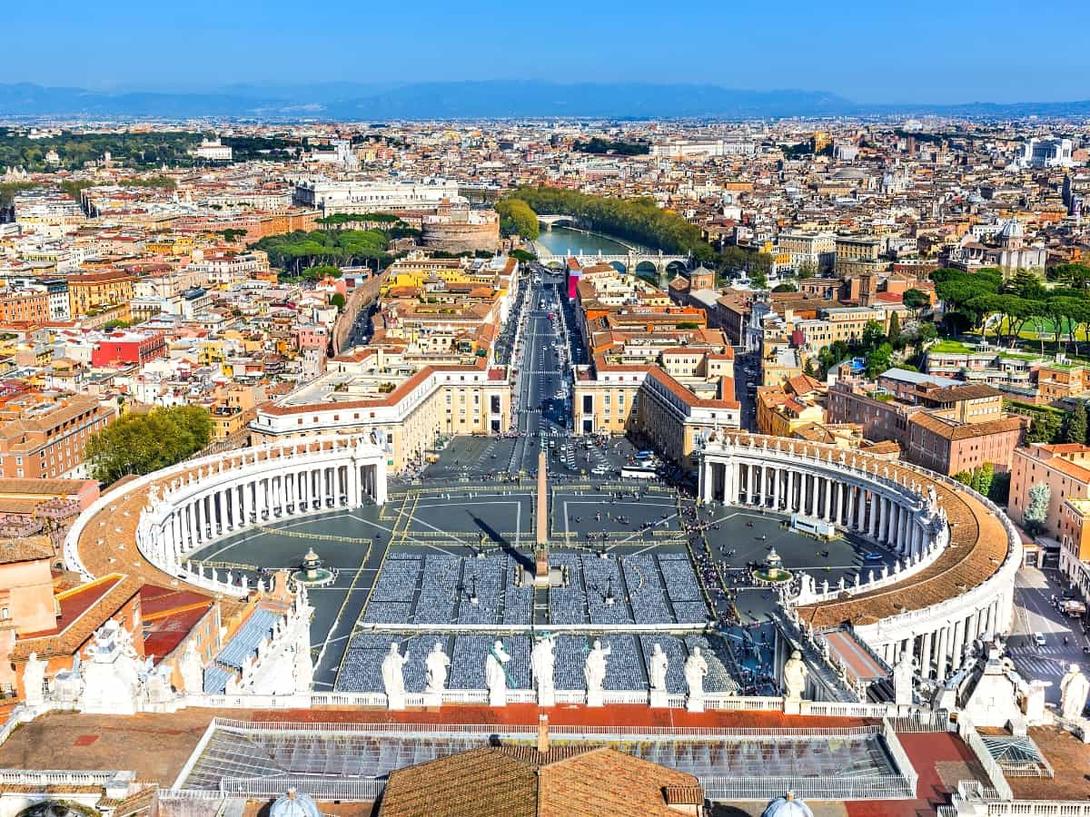
Scholars confirm no Etruscan gods or goddesses bore the name Vatika or anything similar. Thus, the popular notion that the Vatican is named after an Etruscan goddess is unsupported by evidence.
The hill itself, Vaticanus Mons, was recognized in Roman times but the reason behind its name is debated. Ancient sources offer different perspectives. According to Aulus Gellius and Marcus Varro, authors from Roman antiquity, Vaticanus may originate from a god named Vaticanus or Vagitanus. This deity supposedly controlled the beginnings of human speech.
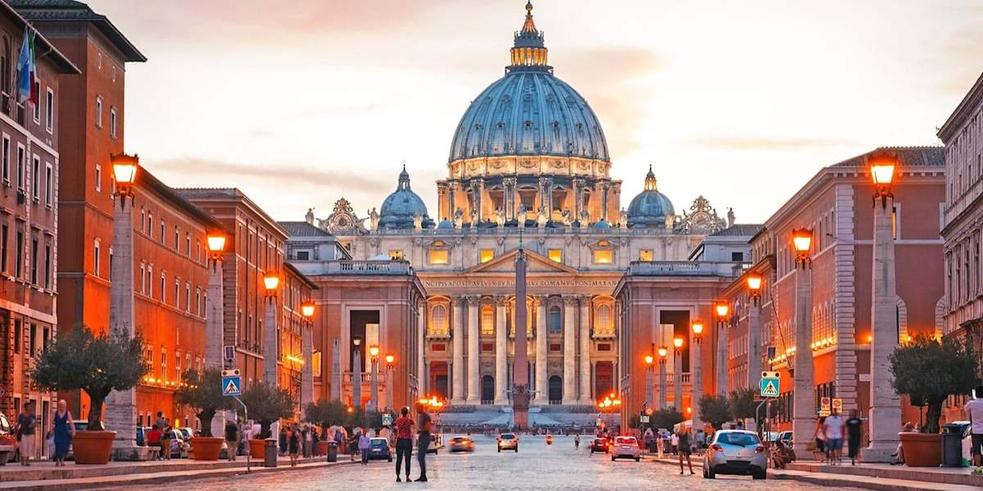
- Varro, in his work Antiquities of the Gods, links Vaticanus to infant crying. He draws a connection between the name and vagire, the Latin verb for “to cry” (particularly of babies).
- Vaticanus or Vagitanus was believed to oversee the first sounds made by newborns, hence the symbolic link to communication beginnings.
This hypothesis suggests the hill was named for a shrine or temple dedicated to this god of first speech. However, no physical evidence of such a shrine has been conclusively identified.
Classical authors vary when mentioning the Vatican hill. Cicero uses the term “Vaticani Montes” to mean a larger area that includes not just the Vatican Hill but also Monte Mario and the Janiculum hills. Other writers such as Horace and Juvenal refer more narrowly, sometimes only indicating the Janiculum or areas around it.
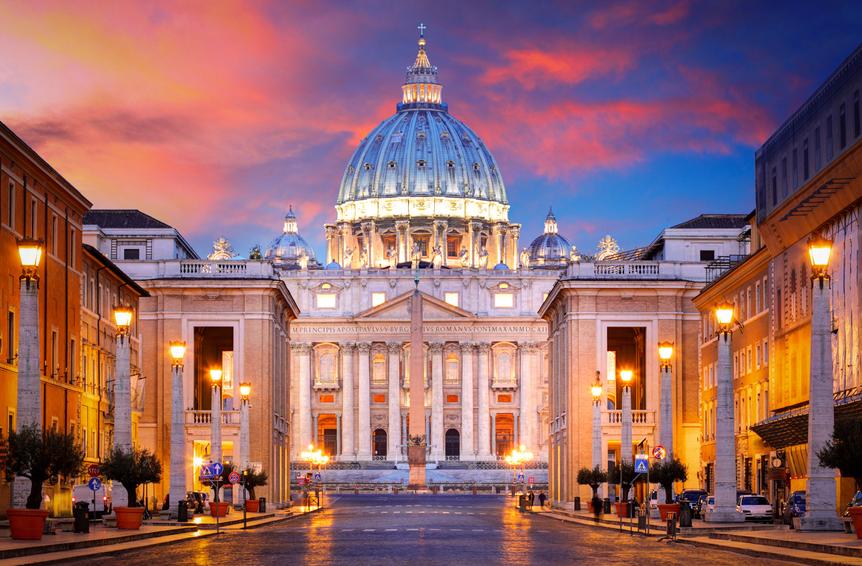
These varying ancient usages complicate a precise understanding of the term’s original geographic or cultural reference. This ambiguity allows multiple interpretations about how the name Vaticanus was initially applied.
Another line of thought proposes that the name derives from an ancient Etruscan settlement called Vatica or Vaticum. These places would have been located near the present Vatican Hill. However, no archeological remains confirm their existence. This theory is recent and remains speculative.
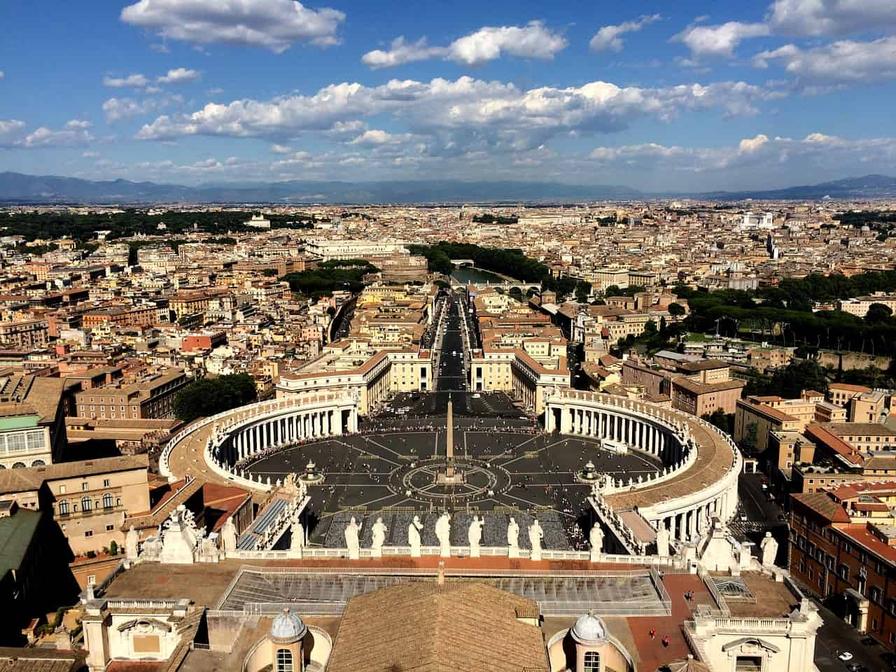
While not named after an Etruscan goddess, the Vatican Hill has historic religious significance. It hosted a shrine to the goddess Cybele, also known as Magna Mater (Great Mother). Archeological finds reveal altars dating from approximately 305 to 390 AD beneath St. Peter’s Basilica. These origins indicate religious activities on the hill long before Christianity’s dominance.
The Vatican Hill lies on the west side of the Tiber River. It is distinct from the seven famous hills of Rome—Palatine, Aventine, Capitoline, and others—which are all on the east side of the river. This geographic detail underlines the separate identity of the Vatican as a place.
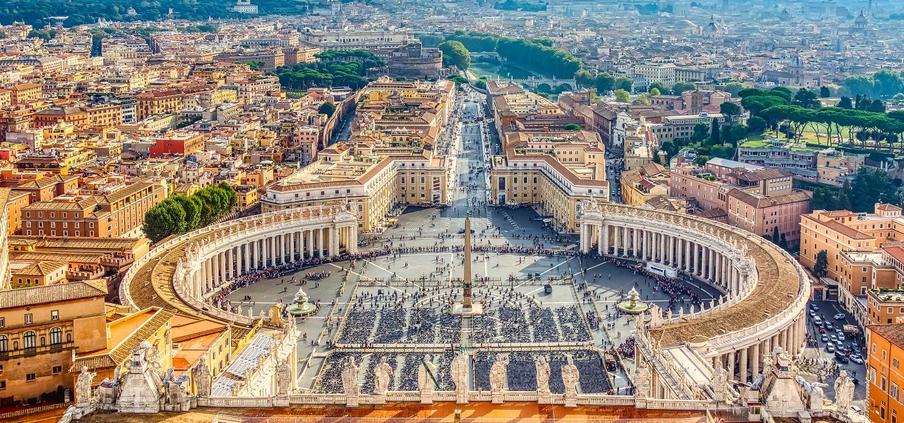
| Aspect | Details |
|---|---|
| Origin of Vatican name | From Vatican Hill (Vaticanus Mons); god Vaticanus/Vagitanus theory; possible Etruscan settlement |
| Etruscan goddess Vatika | No evidence of goddess named Vatika; no link to Vatican name |
| Religious history | Shrine to Cybele found; pre-Christian religious activity indicated |
| Geographical location | West of the Tiber; not part of Rome’s seven hills |
In short, the Vatican’s name originates from the hill it occupies, not from an Etruscan goddess named Vatika. The hill’s name may honor an ancient god associated with speech or possibly stem from an unknown Etruscan place name. Ancient texts and archeology support these explanations but do not definitively settle the matter.
- No Etruscan goddess named Vatika relates to the Vatican’s name.
- Vatican Hill (Vaticanus Mons) gives the Vatican its name.
- Ancient Roman authors link the name to a speech god, Vaticanus or Vagitanus.
- Possible, but unconfirmed, derivation from an Etruscan settlement named Vatica or Vaticum.
- Vatican Hill hosted a shrine to Cybele, evidencing religious activity predating Christianity.
- The hill is geographically separate from Rome’s seven hills, located west of the Tiber River.
Is the Vatican Named After an Etruscan Goddess Named Vatika? If Not, Where Does the Name Come From?
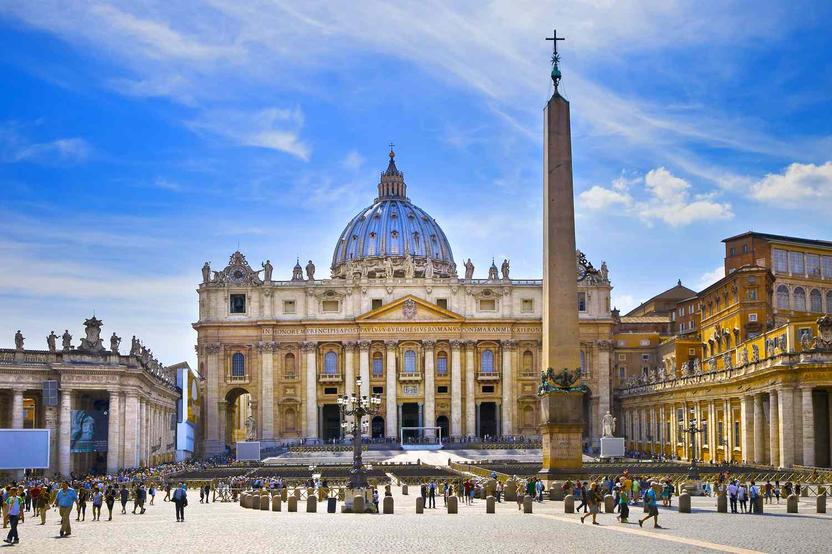
Simply put, no—the Vatican is not named after an Etruscan goddess called Vatika. There is no Etruscan deity by that name. Instead, the Vatican derives its name from the Vatican Hill, or Vaticanus Mons. But hang on—where does the name Vaticanus come from? Buckle up. This story is a little like peeling an onion: layers of history, language, and myth swirling into one fascinating mystery.
First off, it’s a common misconception that the Vatican City takes its name from an Etruscan goddess named Vatika. Historians and classical sources confirm no such deity exists in the Etruscan pantheon. So if you thought you found a lost goddess, sorry to burst your bubble.
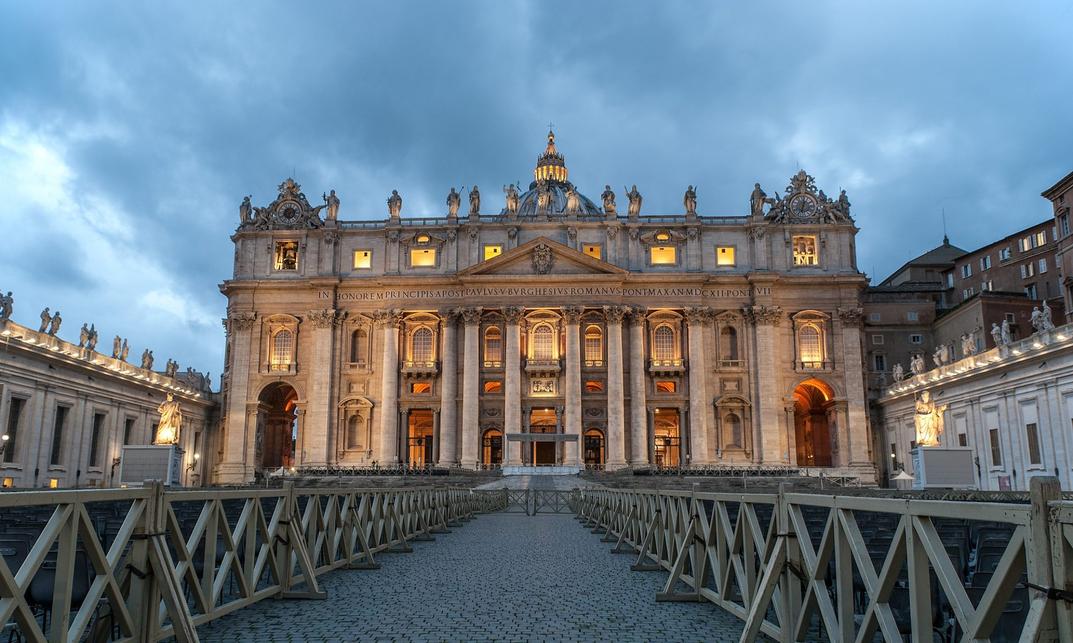
The real origin is geographical: the Vatican is named after the hill it sits on—the Vatican Hill, or Vaticanus Mons in Latin. But ironically, even the ancient sources can’t pinpoint exactly why this hill was labeled “Vaticanus.” The name’s root eludes us, sparking a variety of creative theories over the centuries.
Theories on the Origin of the Name Vaticanus Mons
One notable theory comes from ancient scholars Aulus Gellius and Marcus Varro. Varro, in his work Antiquities of the Gods, links the name Vaticanus to a god named Vaticanus or Vagitanus. According to him, this deity oversaw the beginnings of human speech—specifically, the first cries of newborn infants. The Latin word vagire means “to cry,” referencing that woozy newborn wail, the first syllable of “Vaticanus.”
This means the hill might have been named after a shrine to this god Vagitanus or Vaticanus, who ruled over baby babble. Odd, but intriguing! A god of the “first cry” overseeing a hill that centuries later became the heart of Christianity? History writes strange stories.
However, things get murky when we look at how different ancient writers described the location. Cicero, for example, mentioned Caesar’s plan to divert the Tiber River around the “Vaticani Montes.” In his letters, he seemed to include not only Vatican Hill but also other nearby hills like Monte Mario and Janiculum, implying a broader geographical term than the single hill we know today.
On the flip side, poets like Horace and Juvenal used the term “Vaticanus” more narrowly, often meaning only the Janiculum hill or the area between Janiculum and Monte Mario. This suggests the meaning of Vaticanus Mons was fluid, shifting depending on who you asked.
Adding a modern twist, some scholars propose that Vaticanus might stem from the name of an ancient Etruscan settlement, like Vatica or Vaticum. Yet, no archaeological evidence confirms such a settlement. If it existed, it’s long gone, swallowed up by history’s fog.
Religious Significance Before Christianity
Here’s the kicker: while we know the name Vatican is not tied to a goddess named Vatika, the Vatican Hill itself holds strong ties to religious worship—long before the rise of the papacy.
The area was once home to a shrine dedicated to Cybele, also known as Magna Mater or “Great Mother.” Pieces of altars from the 4th century AD were uncovered beneath St. Peter’s Basilica during 1609 repairs. This shows that long before the Vatican became synonymous with the Catholic Church, it was a religious hotspot.
Given this, it’s reasonable to guess the Vatican area hosted even earlier religious sites dedicated to various gods and goddesses. Cybele’s shrine is only the most famous, not the start of all the worship that happened there.
Where is the Vatican Hill Exactly?
Here’s a geography tidbit for you: the Vatican Hill is not one of Rome’s famous “Seven Hills” like the Palatine or Capitoline. Instead, it sits on the west bank of the Tiber River. This places it somewhat on the outskirts of ancient Rome’s core, adding another layer to its unique identity—a sacred space outside the city’s main religious hubs.
Knowing this flips the idea that the Vatican was a central early Roman religious site; it was more like a quiet hill with religious significance that later grew into the powerhouse it is now.
Why Does This Matter?
Understanding the origin of the Vatican’s name clarifies how complex history, language, and culture shape place names. The Vatican is a prime example that names rarely have simple origins, often tangled in myth, religion, and evolving geography.
Also, it reminds us how assumptions—even logical ones—can mislead. If you guessed that the Vatican comes from an Etruscan goddess named Vatika, you were rolling a six on the historical truth dice but landed on snake eyes. Instead, the name harks back to a hill famed for an obscure god of baby cries or an unknown Etruscan settlement.
So, next time you hear someone mention the Vatican’s divine naming origins, share this well-worn tale about Vagitanus and the crying babies. It’s a fun history nugget that turns a simple question into a complex journey across ancient Rome’s hills and shrines.
Wrapping It Up
- The Vatican is named after the Vatican Hill (Vaticanus Mons), not a goddess named Vatika.
- The exact origin of the name is uncertain; it may come from a god of newborn cries named Vaticanus or from an old Etruscan settlement.
- The hill was a religious site before Christianity, notably housing a shrine to the goddess Cybele.
- The Vatican Hill lies outside the famous Seven Hills of Rome, on the west bank of the Tiber River.
History is rarely neat, and the Vatican’s name is no exception. But that’s what makes uncovering it such a thrilling ride—one filled with noise (newborn cries), shrines, rivers, and eternal curiosity. Isn’t that just the way we like our mysteries?
